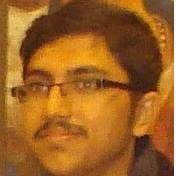International Journal of Image, Graphics and Signal Processing (IJIGSP)
IJIGSP Vol. 7, No. 5, 8 Apr. 2015
Cover page and Table of Contents: PDF (size: 1276KB)
Depth based Occlusion Detection and Localization from 3D Face Image
Full Text (PDF, 1276KB), PP.20-31
Views: 0 Downloads: 0
Author(s)
Index Terms
3D image, 2.5D image, Bosphorus database, Occlusion detection, Range image, Face recognition
Abstract
In this paper, authors have proposed two novel techniques for occlusion detection and then localization of the occluded section from a given 3D face image if occlusion is present. For both of these methods, at first, the 2.5D or range face images are created from input 3D face images. Then for detecting the occluded faces, two approaches have been followed, namely: block based and threshold based. These two methods have been investigated individually on Bosphorus database for localization of occluded portion. Bosphorus database consists of different types of occlusions, which have been considered during our research work. If 2D and 3D images are compared then 3D images provide more reliable, accurate, valid information within digitized data. In case of 2D images each point, named as pixel, is represented by a single value. One byte for gray scale and three byte for color images in a 2D grid whereas in case of 3D, there is no concept of 2D grid. Each point is represented by three values, namely X, Y and Z. The 'Z' value in X-Y plane does not contain the reflected light energy like 2D images. The facial surface's depth data is included in Z's point set. The threshold or cutoff based technique can detect the occluded faces with the accuracy 91.79% and second approach i.e. block based approach can successfully detect the same with the success rate of 99.71%. The accuracy of the proposed occlusion detection scheme has been measured as a qualitative parameter based on subjective fidelity criteria.
Cite This Paper
Suranjan Ganguly, Debotosh Bhattacharjee, Mita Nasipuri,"Depth based Occlusion Detection and Localization from 3D Face Image", IJIGSP, vol.7, no.5, pp.20-31, 2015. DOI: 10.5815/ijigsp.2015.05.03
Reference
[1]S. Ganguly, D. Bhattacharjee, and M. Nasipuri, "2.5D Face Images: Acquisition, Processing and Application," In ICC-2014 Computer Networks and Security, Publisher: Elsevier Science and Technology, Pages: 36-44, Proceedings of 1st International Conference on Communication and Computing (ICC-2014), ISBN: 978-93-5107-244-7, June 12th-14th, 2014.
[2]L. Spreeuwers, "Fast and Accurate 3D Face Recognition Using registration to an Intrinsic Coordinate System and Fusion of Multiple Region Classifiers," In Int J Comput Vis (2011) 93: 389–414, DOI 10.1007/s11263-011-0426-2.
[3]Bosphorus Database, URL: http://bosphorus.ee.boun.edu.tr/default.aspx
[4]R. C. Gonzalez and R. E. Woods, "Digital Image Processing," 3rd Edition, ISBN-13: 978-0131687288 ISBN-10: 013168728X
[5]A. Colombo, C. Cusano and R Schettini, "Recognizing Faces in 3D Images Even In Presence of Occlusions," 978-1-4244-2730-7/08, IEEE, 2008.
[6]N. Aly¨uz, B. G¨okberk, L. Spreeuwers, R. Veldhuis, and L. Akarun, "Robust 3D Face Recognition in the Presence of Realistic Occlusions," 978-1-4673-0397-2/12, IEEE, pp. 111-118.
[7]Hassen Drira, Boulbaba Ben Amor, Anuj Srivastava, Mohamed Daoudi, and Rim Slama. 3D Face Recognition under Expressions, Occlusions and Pose Variations, In IEEE Transactions on Pattern Analysis and Machine Intelligence, 2010.
[8]Z. Zhang, S. Heng Ong, K. Foong, "Improved Spin Images for 3D Surface Matching Using Signed Angles," pp 537-540, 978-1-4673-2533-2/12/$26.00 ©2012 IEEE, ICIP 2012.
[9]S. Ganguly, D. Bhattacharjee, and M. Nasipuri, "3D Face Recognition from Range Images Based on Curvature Analysis," In ICTACT Journal on Image and Video Processing, February 2014, Volume: 04, Issue: 03, pages 748-753, ISSN Number (Print): 0976-9099, ISSN Number (Online): 0976-9102.
[10]A. Seal, S. Ganguly, D. Bhattacharjee, M. Nasipuri, D. K. Basu, "Minutiae Based Thermal Human Face Recognition using Label Connected Component Algorithm," Procedia Technology, In 2nd International Conference on Computer, Communication, Control and Information Technology (C3IT-2012), February 25 - 26, 2012.
[11]H. N. Bui, I. S. Na, S. H. Kim, "De-Noising Model for Weberface-Based and Max-Filter-Based Illumination Invariant Face Recognition," In Ubiquitous Information Technologies and Applications, Lecture Notes in Electrical Engineering Volume 280, 2014, pp 373-380.
[12]H. Zhang, W. Zuo, K. Wang, D. Zhang and Y. Chen. "Median Filtering-Based Quotient Image Model for Face Recognition with Varying Lighting Conditions," In First International Workshop on Education Technology and Computer Science, DOI 10.1109/ETCS.2009.485, 2009.
[13]T. Srinivas, P. S. Mohan, R. S. Shankar, Ch. S. Reddy, P. V. Naganjaneyulu, "Face Recognition Using PCA and Bit-Plane Slicing," In Proceedings of the Third International Conference on Trends in Information, Telecommunication and Computing, Lecture Notes in Electrical Engineering Volume 150, 2013, pp 515-523.
[14]N. Otsu, "In A Threshold Selection Method from Gray-Level Histograms," In IEEE Transactions on Systems, Man, and Cybernetics, Vol. SMC-9, No. 1, January 1979.
[15]S. Ganguly, D. Bhattacharjee and M Nasipuri, "Range Face Image Registration using ERFI from 3D Images", in Proceedings of the 3rd International Conference on Frontiers of Intelligent Computing: Theory and Applications (FICTA) 2014, Series of 'Advances in Intelligent and Soft Computing; Volume 328', Publisher: Springer International Publishing, Pages: 323-333, Vol. 2, Print ISBN: 978-3-319-12011-9, Online ISBN: 978-3-319-12012-6, DOI: 10.1007/978-3-319-12012-6_36, November, 2014.
[16]P. S. Hiremath, M. Hiremath, "Depth and Intensity Gabor Features Based 3D Face Recognition Using Symbolic LDA and AdaBoost", International Journal of Image, Graphics and Signal Processing (IJIGSP) ISSN: 2074-9074(Print), ISSN: 2074-9082 (Online) DOI: 10.5815/ijigsp.


